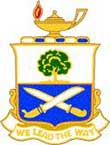DerJimbo
Posts: 15
Joined: 3/21/2005
Status: offline

|
I've stared at that mess for hours trying to figure out the "logic" employed by the genius that permitted the land situation that existed in China prior to Dec 7, '41 to come about in the first place. Finally, late one night, I sat back and...it came to me.
Imagine that you're Chiang Kai-shek and you fancy yourself a great commander. You've studied the Battle of Cannae and you figure you'll try something similar--piece of cake. None of this inching your way forward consolidating your gains as you go. Instead, you decide to try a giant double envelopment by driving deep into the center of China aiming to reach the coast and bypassing Hankow and the surrounding base complexes with a giant pincers movement.
Of course, the trouble is that this places your troops in two giant salients on with the Japs in the middle and in strong positions on either side, and they're perfectly willing to let this happen. After all, in the center they control the bases on either side of the big river, they therefore don't have to worry about supply or overland troop movement--the river is navigable all the way up to Hankow, and the Chinese have no coast defense guns anywhere around to interdict it. Plus, the Japs have overwhelming air superiority, obviously.
And then, the execution by your field commanders leaves something to be desired, but this is entirely understandable. The Chinese army upper echelon during this period was dominated by rather traditional commanders with a "warlord" mentality and an ego to match, without necessarily having the technical competence to back it up.
You can see this all quite easily on the map if you just step back (literally) and look at the "big picture".
That's my take on it, anyway.
|
 Printable Version
Printable Version




















 New Messages
New Messages No New Messages
No New Messages Hot Topic w/ New Messages
Hot Topic w/ New Messages Hot Topic w/o New Messages
Hot Topic w/o New Messages Locked w/ New Messages
Locked w/ New Messages Locked w/o New Messages
Locked w/o New Messages Post New Thread
Post New Thread